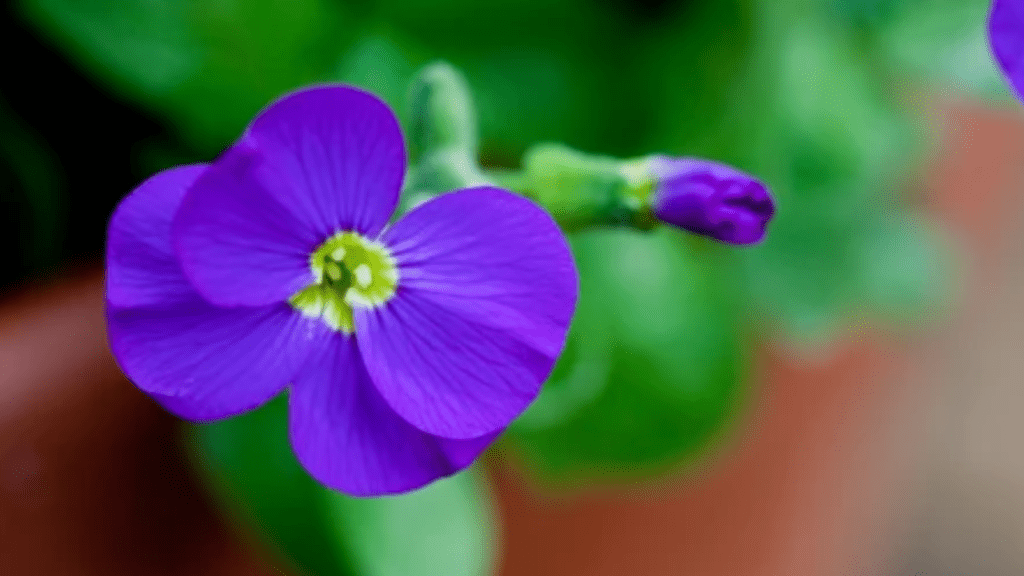
Step-by-Step Guide to Planting and Caring for Aubrieta
Aubrieta is a beautiful and low-maintenance plant that can add vibrant color to your garden. In this post, we will walk you through the step-by-step process of planting and caring for Aubrieta, as well as provide helpful tips for ensuring the health and beauty of these lovely plants. Whether you are a beginner or an experienced gardener, this comprehensive guide will help you successfully grow and maintain Aubrieta in your garden.
Table of Contents
ToggleUnderstanding Aubrieta
What is Aubrieta?
Aubrieta is a colorful and low-growing perennial plant that is known for its vibrant blooms and ability to spread and cascade over rocks and walls. It is a popular choice for rock gardens, borders, and containers due to its ability to thrive in poor soil and its low-maintenance nature. Aubrieta is also known by its common name “Rock Cress” and is native to Europe and Asia. It produces beautiful purple, pink, or white flowers in the spring and early summer, adding a splash of color to your garden. This plant is a great option for gardeners who want to add texture and color to their outdoor space without needing to put in a lot of effort. With the right care, Aubrieta can thrive and bring beauty to your garden for years to come.
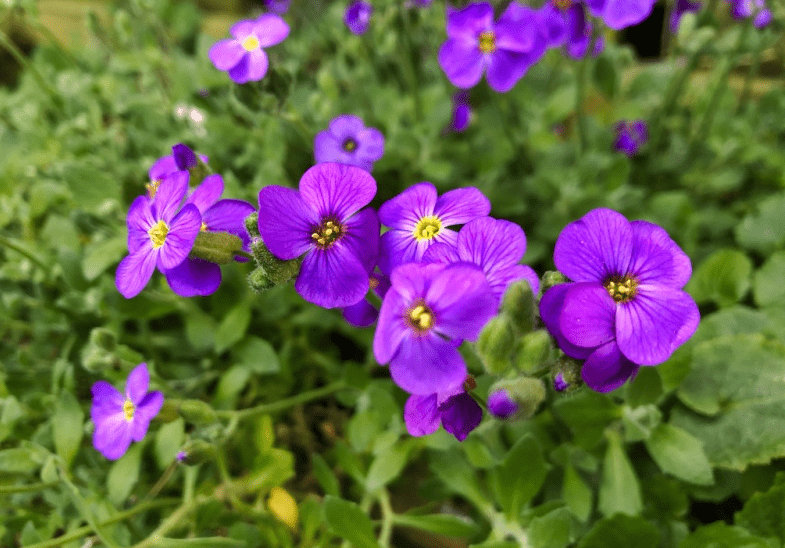
Preparing to Plant Aubrieta
Choosing the Right Location
Explain the importance of selecting a location with the right amount of sunlight (full sun to partial shade).
When selecting a location to plant Aubrieta, it is important to consider the amount of sunlight the area receives. Aubrieta thrives in full sun to partial shade, so it is essential to choose a location that provides the right amount of sunlight for the plant to grow and bloom successfully. Full sun is defined as at least six hours of direct sunlight per day, while partial shade refers to areas that receive three to six hours of sunlight.
Choosing a location with the right amount of sunlight is crucial for the health and growth of Aubrieta. Too much shade can result in stunted growth and poor flowering, while too much sun can lead to wilting and sunburn. By selecting a location with the appropriate sunlight levels, you can ensure that your Aubrieta plants receive the optimal conditions for them to thrive and produce vibrant blooms. It is also important to monitor the sunlight patterns in the chosen location throughout the day and across the seasons to ensure that the plant receives consistent light levels. By providing the right amount of sunlight, you can set your Aubrieta plants up for success and enjoy a beautiful and colorful addition to your garden.
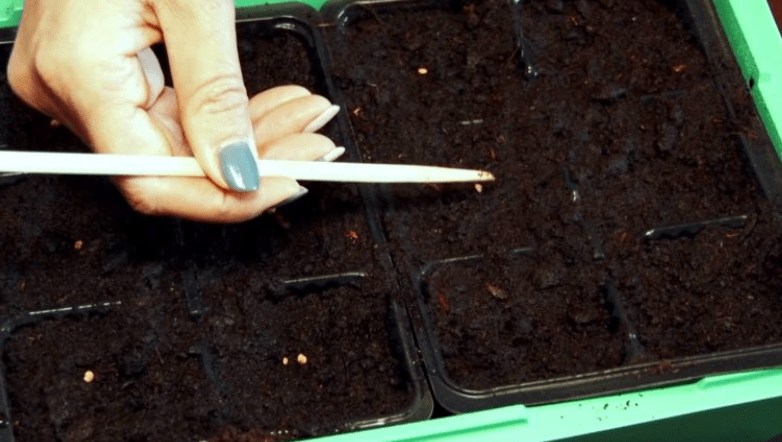
Soil Requirements
Detail the type of soil Aubrieta thrives in, emphasizing well-drained, alkaline to neutral soil.
Aubrieta thrives in well-drained, alkaline to neutral soil. It is important to choose a soil type that provides the right conditions for the plant to grow and thrive. Well-drained soil helps prevent waterlogging, which can lead to root rot and other issues. Alkaline to neutral soil, with a pH level between 6.5 and 7.5, is ideal for Aubrieta. This type of soil allows for proper nutrient uptake and supports healthy growth and blooming. It is important to prepare the soil before planting Aubrieta by ensuring it has the right drainage and pH levels. Adding organic matter, such as compost, can help improve soil texture and fertility. By choosing the right soil type and preparing the planting area properly, you can create an optimal environment for Aubrieta to thrive and flourish in your garden.
When to Plant Aubrieta
Provide information on the best time of year to plant Aubrieta, such as early spring or autumn.
The best time to plant Aubrieta is in early spring or autumn. This allows the plant to establish its roots before the extreme temperatures of summer or winter. It is important to choose a soil type that provides the right conditions for the plant to grow and thrive. Well-drained soil helps prevent waterlogging, which can lead to root rot and other issues. Alkaline to neutral soil, with a pH level between 6.5 and 7.5, is ideal for Aubrieta. This type of soil allows for proper nutrient uptake and supports healthy growth and blooming. It is important to prepare the soil before planting Aubrieta by ensuring it has the right drainage and pH levels. Adding organic matter, such as compost, can help improve soil texture and fertility. By choosing the right soil type and preparing the planting area properly, you can create an optimal environment for Aubrieta to thrive and flourish in your garden.
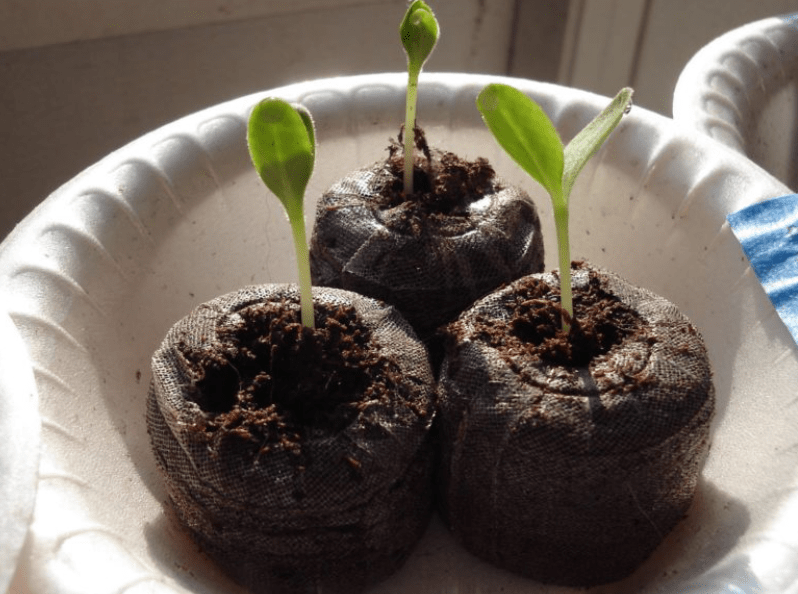
Step-by-Step Guide to Planting Aubrieta
Preparing the Soil
Give instructions on how to prepare the soil before planting, including soil amendment tips.
Before planting, it is crucial to prepare the soil to ensure the optimal conditions for the plant to grow. Start by testing the soil pH level to ensure it falls within the ideal range of 6.5 to 7.5. If the soil is too acidic or alkaline, you may need to amend it with the appropriate products to adjust the pH level.
Next, ensure that the soil has good drainage to prevent waterlogging, which can lead to root rot. If the soil is too compacted, you can improve its texture by adding organic matter such as compost or well-rotted manure. This will also help provide essential nutrients for the plant.
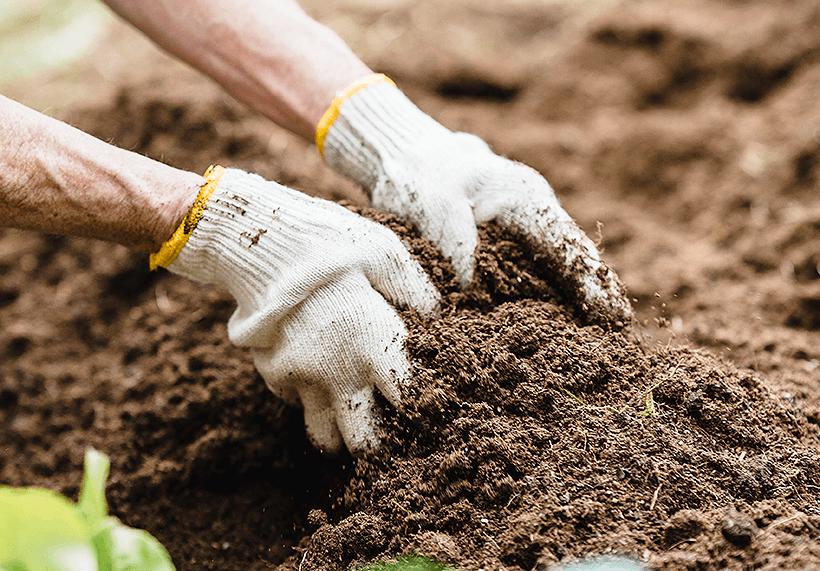
Once the soil is prepped and the pH level is adjusted, you can proceed with planting the Aubrieta. Make sure to follow the specific planting instructions for this particular plant, including spacing and depth requirements. By taking the time to properly prepare the soil, you can create an ideal environment for the Aubrieta to thrive and ensure a successful and healthy garden.
Planting Aubrieta
Offer a step-by-step guide on planting Aubrieta, from spacing to depth of planting.
Planting Aubrieta is a great way to add beautiful, vibrant colors to your garden. To start, you’ll want to choose a location that receives full sun and has well-drained soil. If the soil is too acidic or alkaline, you may need to amend it with the appropriate products to adjust the pH level. Next, ensure that the soil has good drainage to prevent waterlogging, which can lead to root rot. If the soil is too compacted, you can improve its texture by adding organic matter such as compost or well-rotted manure. This will also help provide essential nutrients for the plant. Once the soil is prepped and the pH level is adjusted, you can proceed with planting the Aubrieta.
When planting Aubrieta, it’s important to follow the specific planting instructions for this particular plant. Make sure to space the plants about 12-18 inches apart to allow for proper growth and airflow. Dig a hole that is slightly larger than the root ball of the plant and place the Aubrieta at the same depth as it was in the container. Gently pat the soil around the plant to secure it in place and water thoroughly.
By taking the time to properly prepare the soil and follow the specific planting instructions, you can create an ideal environment for the Aubrieta to thrive and ensure a successful and healthy garden. With the right care and attention, your Aubrieta will reward you with beautiful blooms and lush green foliage.
Watering After Planting
Explain the initial watering requirements after planting to help Aubrieta establish roots.
After planting Aubrieta, it’s important to give it a good initial watering to help establish its roots. Water the plant thoroughly right after planting to ensure that the soil is moist and the roots can start to take hold. After the initial watering, continue to water the Aubrieta regularly, especially during dry periods, to promote healthy root development. It’s important to keep the soil consistently moist, but not waterlogged, to support the plant’s growth. By providing the right amount of water, you can help the Aubrieta establish strong roots and thrive in its new environment.
Caring for Aubrieta
Watering Guidelines
Provide a watering schedule, including how often to water and how to avoid overwatering.
After planting Aubrieta, it’s important to give it a good initial watering to help establish its roots. Water the plant thoroughly right after planting to ensure that the soil is moist and the roots can start to take hold. After the initial watering, continue to water the Aubrieta regularly, especially during dry periods, to promote healthy root development. It’s important to keep the soil consistently moist, but not waterlogged, to support the plant’s growth. Overwatering can lead to root rot and other issues, so it’s important to monitor the soil moisture levels and adjust your watering schedule accordingly. One way to avoid overwatering is to check the soil moisture before watering by sticking your finger into the soil. If the top inch of soil feels dry, it’s time to water. It’s also important to water the Aubrieta in the morning or early evening to reduce the risk of evaporation and ensure the water has time to penetrate the soil. By providing the right amount of water and following a consistent watering schedule, you can help the Aubrieta thrive and maintain its beautiful blooms and lush green foliage.
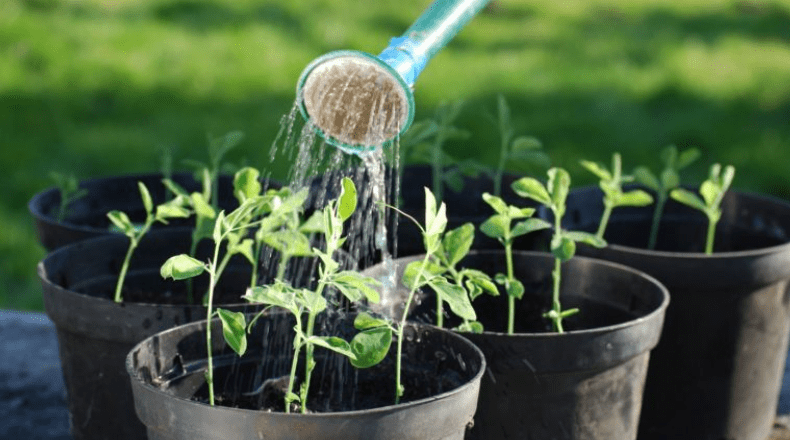
Fertilizing Aubrieta
Discuss the best fertilizers to use and when to apply them for optimal growth.
Fertilizing Aubrieta is an important step in promoting optimal growth and blooming. The best fertilizers to use for Aubrieta are those with a balanced mix of nutrients, such as a 10-10-10 fertilizer. It’s best to apply the fertilizer in early spring, just as the plant is beginning to emerge from dormancy. This will provide the nutrients the plant needs to support healthy growth and blooming throughout the growing season. It’s important to follow the instructions on the fertilizer package for the proper application rate and method. Additionally, you can apply a light application of fertilizer again in early summer to provide an extra boost of nutrients for continued growth and blooming. By fertilizing at the right times and with the right nutrients, you can ensure that your Aubrieta plants thrive and produce an abundance of beautiful flowers.
Pruning and Deadheading
Offer tips on pruning and deadheading to encourage more blooms and maintain the plant’s shape.
Pruning and deadheading are important steps in maintaining the health and appearance of your Aubrieta plant. Pruning can help to promote new growth and maintain the plant’s shape, while deadheading can encourage more blooms. When it comes to pruning, you should aim to trim back any dead or overgrown stems in the early spring before the plant begins to bloom. This will help to promote new growth and keep the plant looking tidy. Additionally, you can also prune the plant after the first flush of blooms has faded to encourage a second round of flowering. When deadheading, you should remove any spent flowers by cutting them back to the base of the stem. This will help to stimulate new flower production and keep the plant looking fresh and vibrant. By incorporating these pruning and deadheading techniques into your maintenance routine, you can ensure that your Aubrieta plant continues to thrive and produce an abundance of beautiful blooms.
Mulching and Weed Control
Explain how to use mulch to retain moisture and prevent weeds around Aubrieta plants.
Mulching around Aubrieta plants can help to retain moisture and prevent weeds. First, you should start by preparing the soil around the plants and then adding a layer of mulch, such as bark chips or shredded leaves. Make sure to spread the mulch evenly around the plants, leaving a small space around the base of the stems to prevent rot. The mulch will act as a barrier, helping to retain moisture in the soil and prevent weed growth. It will also help to regulate the soil temperature and protect the roots of the plants. By using mulch, you can create a healthy and thriving environment for your Aubrieta plants while also reducing the need for frequent watering and weeding.
Common Problems and Solutions
Pests and Diseases
Identify common pests and diseases that may affect Aubrieta and provide solutions.
Aubrieta plants are beautiful and low-maintenance, but they can benefit from mulching to retain moisture and prevent weeds. To start, prepare the soil around the plants by removing any existing weeds and loosening the soil. Then, add a layer of mulch, such as bark chips or shredded leaves, around the plants. Be sure to spread the mulch evenly, leaving a small space around the base of the stems to prevent rot. The mulch will act as a barrier, helping to retain moisture in the soil and prevent weed growth. It will also help to regulate the soil temperature and protect the roots of the plants. By using mulch, you can create a healthy and thriving environment for your Aubrieta plants while also reducing the need for frequent watering and weeding.
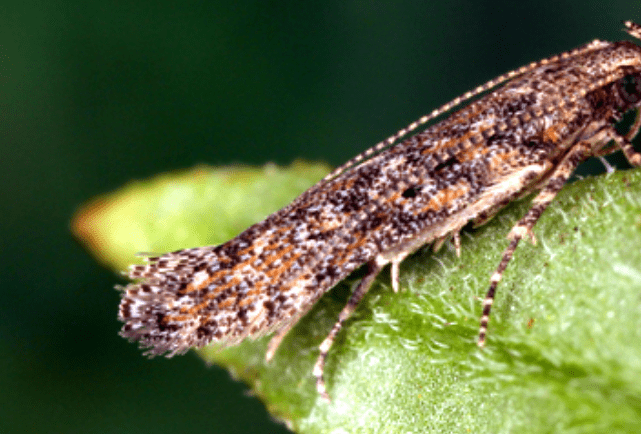
When it comes to pests and diseases that may affect Aubrieta plants, keep an eye out for aphids, slugs, and snails. To combat these pests, you can use insecticidal soap or natural predators such as ladybugs. As for diseases, watch for powdery mildew and root rot. Ensure proper spacing and air circulation around the plants to prevent powdery mildew, and avoid overwatering to prevent root rot. By being proactive and using the right mulching techniques, you can keep your Aubrieta plants healthy and thriving.
Yellowing Leaves
Discuss possible causes of yellowing leaves and how to address them.
When it comes to using mulch around Aubrieta plants, it’s important to choose a mulch that can retain moisture and prevent weeds. Organic mulches such as wood chips, straw, or compost are great options for this. Apply a layer of mulch around the base of the plants, making sure to leave some space around the stems to prevent stem rot. This will help to retain moisture in the soil, reduce the need for frequent watering, and prevent weeds from taking over. Additionally, mulch can help to regulate the soil temperature and protect the roots of the plants. This creates a healthy and thriving environment for the Aubrieta plants. When it comes to pests and diseases, keep an eye out for aphids, slugs, and snails. You can use insecticidal soap or natural predators such as ladybugs to combat these pests. Watch for powdery mildew and root rot as well, and ensure proper spacing and air circulation around the plants to prevent these issues. By being proactive and using the right mulching techniques, you can keep your Aubrieta plants healthy and thriving.
Propagating Aubrieta
Is a great way to expand your garden and share this beautiful plant with others. The best way to propagate Rock Cress is through division or stem cuttings. To divide Aubrieta, simply dig up the plant and use a sharp knife or spade to divide the root ball into smaller sections. Replant these sections in well-draining soil and water them thoroughly. For stem cuttings, take 3-4 inch cuttings from the plant and remove the lower leaves. Dip the cut end in rooting hormone and plant it in a pot with well-draining soil. Keep the soil moist and provide plenty of sunlight, and in a few weeks, you’ll have new Aubrieta plants ready to be transplanted into your garden. By propagating Rock Cress, you can create a beautiful and thriving garden filled with this lovely plant.
Conclusion
In conclusion, with proper planting and care, Aubrieta can thrive in your garden and provide beautiful, colorful blooms. By following the step-by-step guide and implementing the tips provided, you can ensure the health and longevity of these plants in your garden. Remember to provide adequate sunlight, well-drained soil, and regular watering to keep your Aubrieta flourishing. Happy gardening!
Frequently asked questions And Answer
Aubrieta is a low-growing, spreading plant that produces beautiful clusters of purple, pink, or white flowers. It is often used as ground cover or in rock gardens.
The best time to plant Aubrieta is in the spring, after the last frost has passed.
Start by choosing a sunny location with well-draining soil. Dig a hole slightly larger than the root ball of the plant and place the plant in the hole. Backfill with soil and water thoroughly.
Aubrieta prefers well-drained soil and full sun. Water the plant regularly, especially during dry periods, but be careful not to overwater. Deadhead the flowers to encourage more blooms and trim back any overgrown or leggy growth.
Aubrieta is a hardy plant and can survive in cold climates, but it may benefit from some protection during harsh winters.
Aubrieta does not require much fertilization. A light application of a balanced fertilizer in the spring should be sufficient.
Aubrieta can be propagated by division or by taking cuttings. Divide the plant in the spring or take cuttings in the summer.
Aphids and slugs can be a problem for Aubrieta, so keep an eye out for these pests and take appropriate measures to control them. Additionally, powdery mildew can sometimes affect Aubrieta, especially in humid conditions. Proper spacing and good air circulation can help prevent this disease.
